Proven Strategies to Clear Toilet Clogs Effectively
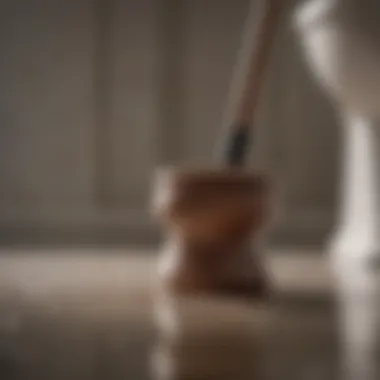
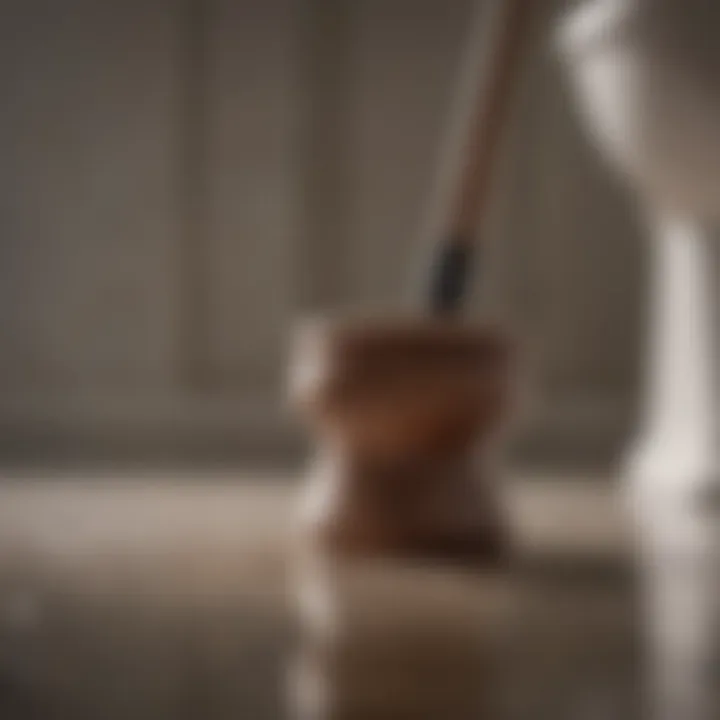
Intro
Toilet clogs happen to the best of us. It's one of those household dilemmas that can easily turn a normal day into a minor crisis. Whether it's an impulsive flush of too much toilet paper or an unforeseen blockage, knowing how to tackle a stubborn clog effectively can be a lifesaver. This guide lays out a comprehensive path that spans traditional methods like plunging, as well as innovative solutions that employ household items. The focus remains not just on unclogging the toilet but also on understanding the core issues that lead to these mishaps.
Arming oneself with some practical know-how can indeed transform any homeowner into a mini plumbing expert. By integrating easy-to-follow steps and emphasizing sanitary best practices, this guide aims to equip you with necessary tools and tips for handling these unwelcome situations with flair.
Key Insights and Trends
Understanding the factors that contribute to toilet clogs is essential. One prevalent trend in home maintenance is preventive measures. Homeowners are increasingly aware of how their daily habits impact plumbing health. Simple actions can drastically reduce the likelihood of a clog. For instance, using less toilet paper or avoiding flushing items like wipes and feminine hygiene products can go a long way.
It’s also noteworthy how DIY solutions are gaining popularity. Instead of rushing to call a plumber, many are adopting home remedies and a bit of elbow grease, relying on the tools and materials available right at home.
Practical Tips and How-To Guides
When faced with a clogged toilet, consider these practical approaches:
1. Start with the Plunger
The plunger is a classic tool that can do wonders. Here’s how to get the best out of it:
- Ensure there’s enough water in the toilet bowl. This helps create sufficient pressure.
- Position the plunger correctly over the drain opening.
- Push down firmly and pull up sharply to create a suction; repeat this motion several times.
- Check to see if the water drains; if not, give it another go.
2. Try a Toilet Auger
If the plunger doesn’t cut it, a toilet auger (or snake) may be your answer. This tool is specifically designed for toilets and can reach deeper clogs. To use it:
- Insert the auger into the toilet bowl.
- Turn the handle clockwise until you feel resistance.
- Push gently to break up the blockage, then pull it back.
Tip: Always wear gloves when handling these tools for hygiene purposes.
3. Utilize Baking Soda and Vinegar
As surprising as it may sound, baking soda and vinegar can be effective in breaking down minor clogs.
- Pour one cup of baking soda into the toilet bowl.
- Follow with two cups of vinegar.
- Let the mixture sit for about 30 minutes before flushing.
- This chemical reaction can sometimes loosen the debris causing the blockage.
4. Prevent Future Clogs
- Use less toilet paper.
- Educate household members on what can and cannot be flushed.
- Regularly maintain your plumbing systems.
"An ounce of prevention is worth a pound of cure." Remembering this idiom might save you from future hassle.
End
Armed with these methods, there’s no need to panic at the first sign of a clogged toilet. By understanding the reason behind the clogs and employing some handy techniques, anyone can manage bathroom emergencies with confidence. So, whether you're a veteran DIY homeowner or new on the block, these tips and tricks can ensure your toilet runs smoothly—keeping the water where it belongs.
Understanding Toilet Clogs
Toilet clogs can be quite the annoyance, turning an everyday task into a frustrating ordeal. It's important to recognize that understanding toilet clogs serves as the foundation for efficiently managing and preventing them. When you know the potential causes behind these pesky blockages, you're better equipped to tackle them head-on. Furthermore, comprehending the mechanics of how a toilet drains can unveil insights that help avoid unnecessary complications.
In essence, awareness of toilet clogs can save both time and resources in the long run. Moreover, an informed approach can help maintain the hygiene of your space. By grasping the underlying principles, you can make educated decisions about prevention measures and remedies, thus ensuring that minor issues don't spiral into major headaches.
Common Causes of Toilet Clogs
Toilet clogs don’t just spring up out of nowhere; they usually stem from specific, recognized issues. At times, the average user might simply remain blissfully unaware of what leads to clogs. Here are some common culprits that tend to cause trouble:
- Excessive toilet paper: Seems innocent enough, but using too much toilet paper can easily create a clog. Everyone likes to feel fresh, but moderation is key.
- Non-flushables: Some items, such as sanitary products, wipes, or even Q-tips, can wreak havoc with your plumbing. Remember, if it’s not meant to be flushed, it��’s best to dispose of it another way.
- Low flush toilets: While low-flush toilets are eco-friendly, they sometimes lack the power to clear everything they should. Just a small obstruction may thwart their efforts.
- Hard water buildup: Over time, minerals can accumulate in pipes, especially in areas with hard water. This buildup can narrow the passage, increasing the likelihood of clogs.
- Objects trapped in the toilet: Little ones can sometimes act without thinking, and a toy or other object may accidentally be flushed. These unexpected blockages require immediate attention.
Recognizing these issues provides valuable context when tackling a clog, making it easier to prevent future incidents.
The Mechanics of Toilet Drainage
Understanding how toilets function is crucial for grasping why clogs happen in the first place. The toilet drain relies on several key mechanisms:
- Gravity: This is the star of the show. When the toilet is flushed, gravity kicks in, pulling waste and water down the drain.
- Siphoning: The toilet bowl and drain design create a siphoning effect. When flushed, water from the tank pushes down, creating a vacuum that pulls waste through the trap and into the drain.
- Pressure: The pressure from the water flow contributes to the efficiency of the flushing system. A consistent and ample water flow ensures everything goes down smoothly.
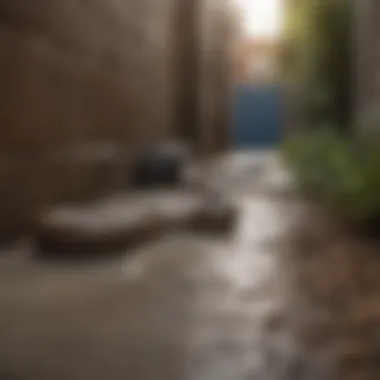

For a profound understanding of these mechanics, consider this quote:
“A proper appreciation of your toilet's working parts can help you avert damage and maintain clarity in times of crisis.”
Tools for Unclogging a Toilet
When the toilet refuses to cooperate, having the right tools at your disposal can make all the difference. Having the perfect gear not only saves you time but also spares you from the kind of mess you’d rather not deal with. A well-equipped homeowner can tackle the common nuisance of toilet clogs with confidence. Tools can range from basic devices you probably already have in the garage to specialized equipment designed for tough blockages.
Plungers: Types and Effectiveness
Plungers are often the first line of defense against a stubborn toilet clog. Their design makes them quite effective at dislodging blockages, but not all plungers are created equal. Two main types—traditional cup plungers and flange plungers—serve different purposes.
Traditional Cup Plunger
The traditional cup plunger is probably what comes to mind when you think of kitchen or bathroom cleaning. With its simplistic design, it boasts a rubber cup attached to a long handle. One significant aspect of this plunger is its versatility. While it's stellar for toilets, it's just as handy for sinks and bathtubs.
What makes the traditional cup plunger a popular choice is its simplicity. It’s easy to use and doesn’t require any special skills. When you push down on it, the seal it creates pushes the water back and forth within the drain, helping to dislodge whatever is causing the blockage. However, the downside is that its effectiveness can be limited for deeper clogs within the toilet.
In summary, the traditional cup plunger is beneficial as an initial tool against minor clogs, but its capability may fall short with more stubborn issues.
Flange Plunger
Then we have the flange plunger, designed specifically for toilets. This plunger features a rubber flange that folds out from the cup, providing a tighter seal when plunged. This unique design allows for increased force right where it's needed most—in the toilet drain.
The flange plunger is often favored because of its targeted effectiveness. Its structure enables it to tackle more serious clogs that the traditional cup might miss. On the flip side, users should be aware that the wider design can sometimes make it a bit trickier to use in tighter spaces.
Thus, if you’re staring down a significant clog, the flange plunger offers the advantage of a more potent push, making it an excellent addition to your tool collection.
The Toilet Auger: When to Use It
After trying the plungers, if the toilet is still giving you trouble, it might be time to reach for a toilet auger. Often dubbed as a plumber’s snake, this handy tool is designed for more stubborn clogs that lie deeper within the plumbing. The auger features a long, flexible metal cable, topped with a coiled tip. Insert it into the toilet, and you can break up or retrieve the obstruction that's causing the blockage. It's most useful in cases where plungers either fail or are ineffective.
Chemical Solutions: Pros and Cons
For those who prefer a chemical approach, drain cleaners come into play. While they aren’t suitable for every situation, they do offer a convenient alternative when manual methods fail. However, the use of chemicals is a double-edged sword.
Types of Chemical Drain Cleaners
Chemical drain cleaners are generally classified into three types: caustic, acidic, and enzymatic. Caustic cleaners primarily contain sodium hydroxide and work by producing heat that breaks down fats and grease. Acidic cleaners, on the other hand, often have sulfuric acid that can eat away at organic matter in the clog. Enzymatic cleaners use bacteria to digest waste, serving as a more gentle and environmentally friendly option. What sets them apart is their specialized approach, making each suitable for different types of clogs.
The downside? These cleaners can be hazardous, potentially damaging pipes if used improperly. Always read the instructions carefully and use gloves—not to mention it’s prudent to ensure the cleaner is compatible with your plumbing.
Environmental Considerations
When considering chemical solutions, one has to think about the environmental impact. While the prospect of an easy fix is tempting, many of these chemicals can be harmful to the ecosystem. They can kill beneficial bacteria in septic systems and, if improperly disposed of, can seep into the groundwater.
By opting for eco-friendly cleaners when possible, or reserving heavy-duty chemicals for only the most severe clogs, you can mitigate some negative effects. The use of safer alternatives can also mean less inherent risk when it comes to your plumbing system’s longevity and performance.
In every situation, weigh your options carefully. Always prioritize safety and the long-term health of your plumbing system.
In essence, knowing what tools are available—and how to use them efficiently—can lead to a hassle-free clean-up when facing a clogged toilet.
Step-by-Step Unclogging Techniques
Navigating the ins and outs of toilet clogs can be a frustrating experience. However, understanding effective step-by-step unclogging techniques is crucial for every homeowner. Not only does it save you from costly plumbing bills, but it also gives you the confidence to tackle minor issues before they escalate into bigger problems. By employing these techniques properly, you can turn a potentially messy situation into something manageable. Here we delve into practical methods to restore your toilet's functionality.
Using a Plunger Effectively
A plunger is probably the first thing that springs to mind when you think of unclogging a toilet. Yet, it's not just any old plunger that will do; you need to know how to use it correctly to maximize its effectiveness. The traditional cup plunger works great for flat surfaces, but the flange plunger is your best bet for toilets. Its design allows for a better seal and consequently more strong suction.
To use a plunger, follow these steps:
- Ensure there’s enough water in the bowl to cover the plunger cup.
- Position the plunger over the drain opening and push down gently to create a seal.
- Pull back quickly without breaking the seal and then push down again.
- Repeat this motion for about 15-20 seconds.
- Check if the water drains away – if not, repeat the process.
Always remember to keep the toilet dry from any water spillage, and wash your hands after use, as sanitation is key here.
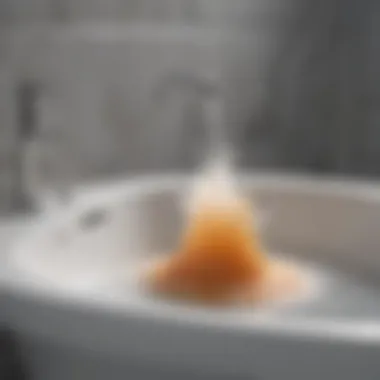

Employing a Toilet Auger
If plunging fails to solve the problem, it may be time to bring in the toilet auger. Also known as a plumbing snake, this tool is designed specifically for breaking through stubborn clogs that a plunger simply can’t budge. Using a toilet auger can sound daunting, but it's easier than it appears.
To employ a toilet auger:
- Insert the auger into the toilet bowl until you feel resistance.
- Rotate the handle to extend the snake down into the drain.
- Once you feel it break through the clogged material, pull back slightly while still cranking the handle to grab hold of any blockages.
- Withdraw it carefully, cleaning it off as you pull it out.
- Finally, flush the toilet to check for proper drainage.
This tool is handy for dealing with serious clogs caused by items that have fallen into the toilet, from toys to excessive paper.
Applying Hot Water as a Solution
Sometimes the power of heat can work wonders for a stubborn clog. Hot water can help breakdown waste and other materials that have caused a blockage without sending your plumbing system into a tizzy. However, be cautious here—boiling water can crack porcelain if poured too quickly.
To use hot water effectively:
- Heat a pot of water on the stove until it's hot, but not boiling.
- Pour it slowly into the toilet bowl, letting it sit for a few moments.
- This should help soften the clog—give it some time and, if necessary, follow up with a plunge.
This option is especially useful for clogs caused by grease or soap scum, as it can help dissolve the matter without introducing harsh chemicals.
Utilizing Baking Soda and Vinegar
For those looking for an eco-friendly approach, try this classic science experiment right in your toilet. Baking soda and vinegar create a chemical reaction that can be remarkably effective in breaking down clogs.
Here’s how to utilize this household remedy:
- Pour a cup of baking soda into your toilet bowl, ensuring it gets down into the drain.
- Follow it up with two cups of vinegar.
- Close the lid and let the mixture fizz for about 30 minutes.
- Afterward, flush the toilet with hot water to see if the clog has cleared.
The fizzing action will help dislodge grime, offering a simple and non-toxic way to tackle clogs, pleasing both your plumbing and the planet.
Remember, keeping your toilet well-maintained can go a long way in avoiding these troublesome clogs. It’s often the small actions that make a significant difference!
In summary, effective unclogging techniques are essential tools for any homeowner. Whether you are plunger savvy or prefer to go the chemical-free route with baking soda, understanding the nuances can make a difference in your toilet's performance.
Preventive Measures for Future Issues
Toilet issues can leave you in quite a bind, and the best way to deal with them is to prevent them from happening in the first place. Investing time in preventive measures not only keeps your toilet functioning properly but also saves you from potential costly repairs down the road. A properly maintained toilet is not just about convenience; it affects overall hygiene, reduces water wastage, and promotes a healthier living environment.
Understanding What Can Be Flushed
A common misconception is that all bathroom waste is safe to flush. However, knowing what truly can go down the toilet is crucial. Many folks think that any scraps or miscellaneous items fit for flushing are okay—this is far from the truth. Only human waste and toilet paper should see the inside of your toilet bowl. Items like feminine hygiene products, wipes—even if they say they are biodegradable—can lead to clogs. The simple rule here is: If it ain't waste or toilet paper, don’t flush it.
Regular Maintenance Practices
Maintaining your toilet is key to prolonging its life and functionality. Here are a couple of robust practices to consider:
Routine Check-Ups
Conducting routine check-ups is a strategy often overlooked by many. Regular checks ensure that everything is functioning as it should be. This includes inspecting for leaks, unusual noises, or any decline in flushing power. It can save you from a much larger headache later on. People often forget that early detection of small problems can keep major ones at bay.
- Key Characteristic: Routine check-ups let you stay one step ahead of clogs and breakdowns.
- Unique Feature: The beauty of regular inspections is that they are quick and usually don't take too much time—usually about ten to fifteen minutes.
- Advantages: A small investment in time could save you a hefty bill from a plumber.
Using Drain Screens
Consider using drain screens as a preventive measure. They serve as a barrier, catching small objects and debris that can lead to clogs.
- Key Characteristic: Drain screens help keep foreign items from slipping down the drain and causing issues.
- Unique Feature: Most screens are simple to install and easy to clean, making them a hassle-free solution.
- Advantages: This minor addition can significantly reduce clogs while also promoting a sense of cleanliness in your bathroom that goes a long way.
Preventive measures like these contribute tremendously to maintaining toilet functionality, enhancing hygiene, and ensuring a smoother plumbing experience in your home.
Alternative Methods and Unconventional Techniques
In addressing the all-too-common toilet clog, alternative methods and unconventional techniques can often provide surprisingly effective solutions. While many have a trusty plunger or a bottle of harsh chemicals as go-to remedies, there’s a world of creative approaches that can save time, effort, and, yes, a fair bit of frustration. These techniques can also appeal to those who have a thing for DIY solutions or environmental sustainability.
One critical element to acknowledge is the importance of assessing the situation before diving into action. Knowing when to employ these methods can make the difference between a temporary fix and a long-term resolution. For instance, using a specific tool or technique may work wonders in one scenario yet fall flat in another. Hence, understanding your options is key.
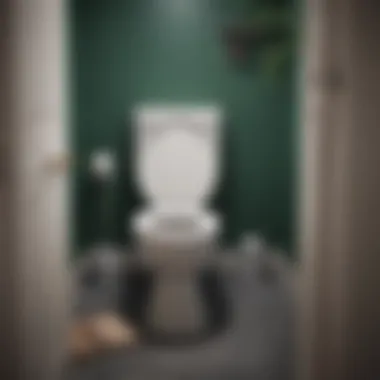
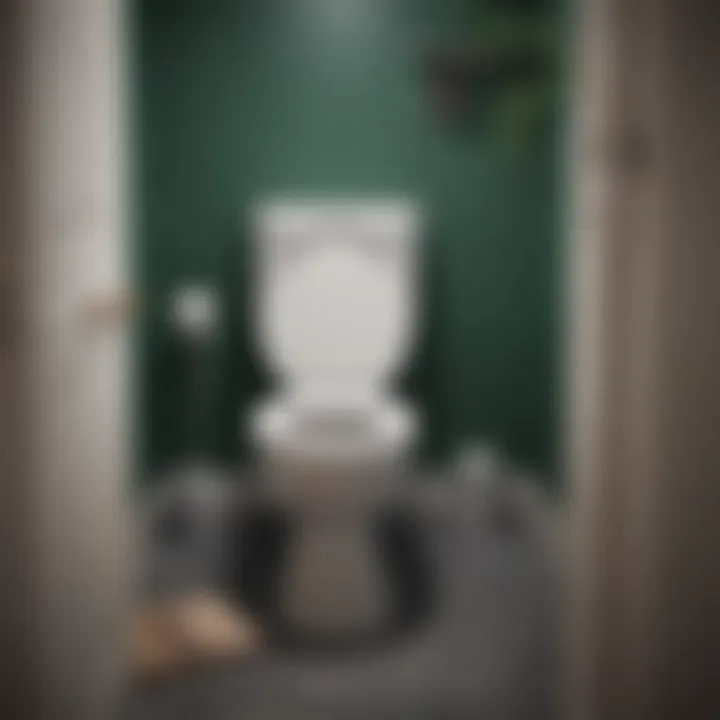
Using a Wet/Dry Vacuum
A wet/dry vacuum, or shop vacuum as some people call it, can serve as a powerful ally in your battle against stubborn toilet clogs. Before you begin, ensure your vacuum is rated for liquids, as regular vacuums just won’t cut it.
To utilize a wet/dry vacuum for this purpose, proceed as follows:
- Preparation: Remove the toilet seat if you can; it makes the job easier. Place the vacuum hose as close to the drain as possible.
- Create a Seal: Insert the vacuum hose into the bowl and form a seal. This is crucial! You want all that suction to work directly on the clog.
- Turn it On: Crank up the vacuum. The suction should pull the blockage right out without much fuss.
- Disposal: Once the clog is removed, be prepared to clean your vacuum thoroughly, as things could get messy!
This method appeals particularly to those who are cautious about potential damage from chemical solutions. Plus, in many cases, using a wet/dry vacuum is faster than traditional methods.
Exploring Eco-Friendly Solutions
For homeowners and renters who are keen to go green, eco-friendly solutions abound when it comes to unclogging toilets. It’s surprising how everyday items can tackle such a vexing problem without the environmental footprint that comes with many chemical cleaners.
Here are some eco-friendly approaches:
- Baking Soda and Vinegar: A classic remedy that many people swear by. Pour about a cup of baking soda followed by two cups of vinegar down the toilet. Let it fizz and bubble for about 30 minutes before flushing. This reaction can help dislodge minor clogs.
- Salt and Water: Pour a generous cup of salt into the toilet followed by hot water. Let it sit for a while. The salt can help break down the clog, especially if it is organic matter.
- Dish Soap: Add a generous amount of dish soap into the bowl and follow it with hot (not boiling) water. The soap helps lubricate and can aid in breaking down blockages.
Using these alternatives comes with the additional benefit of just being easier on the wallet as well. Not to mention, eco-friendly methods ensure you aren’t inadvertently harming the very systems designed to carry waste away from your home.
A little creativity and knowledge can change the game when it comes to dealing with clogged toilets. All it takes is the right technique for the job at hand.
When to Call a Professional Plumber
Knowing when to call in the experts can save you from further trouble. While many homeowners might feel tempted to tackle the problem alone, certain situations call for professional intervention. Not every clog is created equal; some are deeper and more stubborn than what the average DIY enthusiast can handle.
Signs That Indicate Professional Assistance is Needed
Identifying when your clog is beyond home remedies is crucial. Here are a few clear indicators:
- Multiple Clogs: If you notice that more than one fixture is experiencing clogs, like the toilet paired with the sink or shower, this might signal a more significant plumbing issue.
- Frequent Backups: Regular plumbing problems could suggest a developing issue in your main sewage line, needing immediate attention.
- Foul Odors: A lingering bad smell often means there’s a blockage somewhere in the plumbing that’s pushing waste gases back up.
- Water Levels: If your toilet water level fluctuates irregularly or is constantly low, there may be an obstruction in the drainage system.
If any of these issues crop up, putting down the plunger and picking up the phone could be your best bet to prevent bigger headaches later.
Cost Considerations in Hiring a Plumber
Understanding the financial aspect of hiring a plumber can help you approach the situation with clarity. Plumbers charge different rates based on various factors:
- Hourly Rates: Many plumbers bill by the hour, often ranging from $50 to $150. This can quickly add up, especially for deep or intricate issues that require more time.
- Service Fees: For those just popping in to assess the problem, there might be a service fee added onto your bill, sometimes around $100.
- Flat Rates: Certain jobs, like unclogging a toilet, might have a flat rate agreed upon in advance, which provides predictability in budgeting.
Budgeting Considerations:
- Make sure to get a written estimate before any work begins.
- Consider the long-term benefits of professional help; investing now may save you from costly repairs in the future.
- Check to see if your homeowner's insurance covers plumbing issues.
Being prepared for the potential costs can help maintain your peace of mind as you navigate the often-stressful task of dealing with a troublesome toilet.
Epilogue and Recap
This section serves as a pivotal moment to draw together the threads of knowledge shared throughout the article. Understandably, toilet clogs can create stress and inconvenience in any home, and being prepared with effective methods to tackle these issues is invaluable. The insights provided here equip readers with practical and actionable techniques to maintain their toilets' functionality and prevent future problems.
A good recap emphasizes key methods and tools available for unclogging toilets, including plungers, augers, and alternative solutions like baking soda and vinegar. Each method was outlined in detail, reflecting their effectiveness depending on the severity of the clog and the context of the situation.
Also, the considerations surrounding when to enlist professional help cannot be overstated. It’s easy to underestimate the complexity of plumbing systems. Recognizing the signs that indicate a situation is beyond DIY solutions is critical in preventing further damage and ensuring comprehensive maintenance of the plumbing system.
To effectively summarize the main takeaways, it is vital to remember that knowledge and preparation lead to smoother resolutions:
- Identify Causes: Understanding what causes clogs helps in preventing them in the first place.
- Employ the Right Tools: Different tools cater to different types of clogs.
- Know When to Act Quickly: Early action can mitigate bigger plumbing issues.
- Regular Maintenance: Keeping toilets clean and knowing proper disposal methods can be a game-changing practice.
"A stitch in time saves nine; addressing small issues can avert bigger headaches later on."
Ultimately, this article aims not just to provide a guide for unclogging toilets, but to foster a more informed relationship with plumbing systems in homes. Embracing these practices creates a sense of control and promotes overall hygiene, making the bathroom experience much more pleasant for everyone.
Summary of Key Points
- Understanding Toilet Clogs: Knowledge of common causes can help in preventative measures.
- Tools and Techniques: Effective use of plungers, augers, and alternative methods.
- Knowing When to Seek Help: Recognizing signs of serious clogs.
- Preventive Practices: Regular checks and proper disposal methods to minimize clogs.
Final Thoughts on Toilet Maintenance
Toilet maintenance is an often-overlooked aspect of home management. Yet, it stands as a cornerstone for ensuring overall hygiene and preventing plumbing disasters. Adopting a proactive approach can significantly alter one's experience with toilet-related issues.
Establishing a routine, including periodic inspections and preventive measures like using drain screens, will keep both toilets and resulting plumbing systems in optimal shape. Everyday actions, such as educating family members on what can be flushed and regularly cleaning toilet parts, can greatly enhance the life span of your bathroom fixtures.
A final thought to keep in mind is to view toilet maintenance as an ongoing responsibility. By being vigilant and informed, homeowners can navigate unexpected issues with confidence, transforming potential disasters into manageable tasks.



